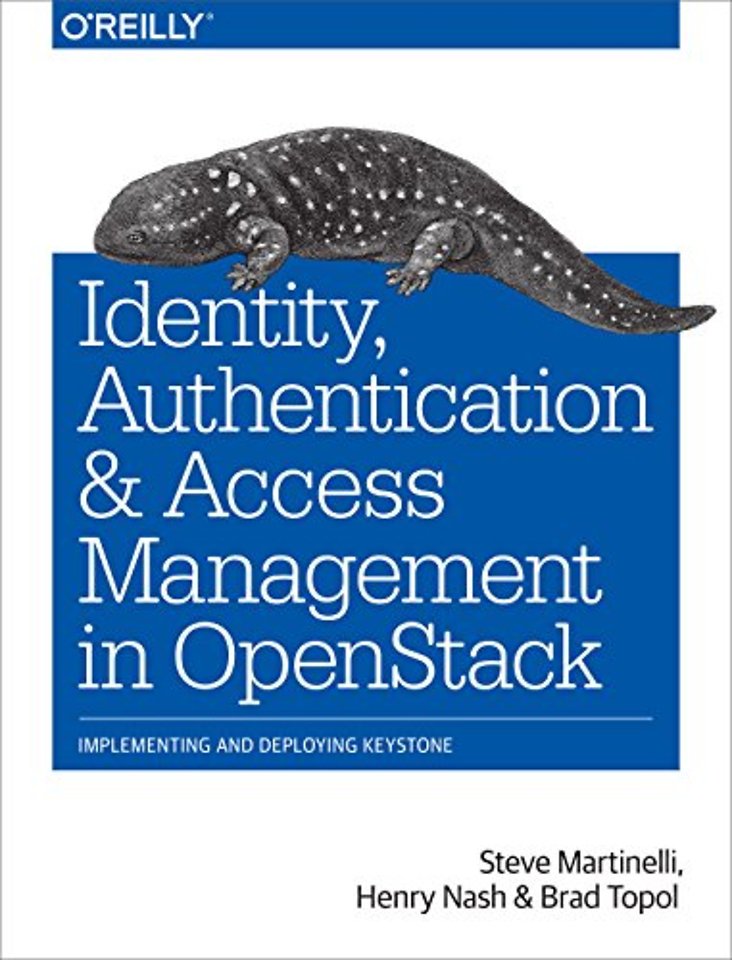Identity, Authentication and Access Management in OpenStack
Implementing and Deploying Keystone
Samenvatting
Keystone—OpenStack's Identity service—provides secure controlled access to a cloud’s resources. In OpenStack environments, Keystone performs many vital functions, such as authenticating users and determining what resources users are authorized to access.
Whether the cloud is private, public, or dedicated, access to cloud resources and security is essential. This practical guide to using Keystone provides detailed, step-by-step guidance to creating a secure cloud environment at the Infrastructure-as-a-Service layer—as well as key practices for safeguarding your cloud's ongoing security.
- Learn about Keystone's fundamental capabilities for providing Identity, Authentication, and Access Management
- Perform basic Keystone operations, using concrete examples and the latest version (v3) of Keystone's Identity API
- Understand Keystone's unique support for multiple token formats, including how it has evolved over time
- Get an in-depth explanation of Keystone's LDAP support and how to configure Keystone to integrate with LDAP
- Learn about one of Keystone's most sought-after features—support for federated identity
Specificaties
Inhoudsopgave
1.1 Keystone Concepts
1.2 Identity
1.3 Authentication
1.4 Access Management and Authorization
1.5 Backends and Services
1.6 FAQs
2. Let’s Use Keystone!
2.1 Getting DevStack
2.2 Basic Keystone Operations Using OpenStackClient
2.3 Basic Keystone Operations Using Horizon
2.4 Tips, Common Pitfalls, and Troubleshooting
3. Token Formats
3.1 History of Keystone Token Formats
3.2 UUID Tokens
3.3 PKI Tokens
3.4 Fernet Tokens
3.5 Tips, Common Pitfalls, and Troubleshooting
4. LDAP
4.1 Approach to LDAP Integration
4.2 Configuring Keystone to Integrate with LDAP
4.3 Multiple Domains and LDAP
4.4 A Practical Guide to Using Multi-Domains and Keystone
4.5 Projects, Roles, and Assignments from LDAP (Just Say NO!)
4.6 Tips, Common Pitfalls, and Troubleshooting
5. Federated Identity
5.1 Approach to Federation
5.2 Translating User Attributes to Keystone Concepts
5.3 Authentication Flow: What’s It Look Like?
5.4 Single Sign-On
5.5 A Practical Guide to Federating Identities for IBM WebSphere Liberty and Bluepages
5.6 A Practical Guide to Setting Up SSO with Google
5.7 Tips, Common Pitfalls, and Troubleshooting
6. Future Work
6.1 Multi-Factor Authentication
6.2 Integration with Horizon for Multi-Region Keystone to Keystone Federation Support
6.3 Using LDAP as a Federated Identity Provider
6.4 Replacement of Service Users with X.509 Certificates and Barbican Integration
6.5 Centralized Policy and Distribution
6.6 Integrating with Other Technologies
Anderen die dit boek kochten, kochten ook
Net verschenen
Rubrieken
- aanbestedingsrecht
- aansprakelijkheids- en verzekeringsrecht
- accountancy
- algemeen juridisch
- arbeidsrecht
- bank- en effectenrecht
- bestuursrecht
- bouwrecht
- burgerlijk recht en procesrecht
- europees-internationaal recht
- fiscaal recht
- gezondheidsrecht
- insolventierecht
- intellectuele eigendom en ict-recht
- management
- mens en maatschappij
- milieu- en omgevingsrecht
- notarieel recht
- ondernemingsrecht
- pensioenrecht
- personen- en familierecht
- sociale zekerheidsrecht
- staatsrecht
- strafrecht en criminologie
- vastgoed- en huurrecht
- vreemdelingenrecht








